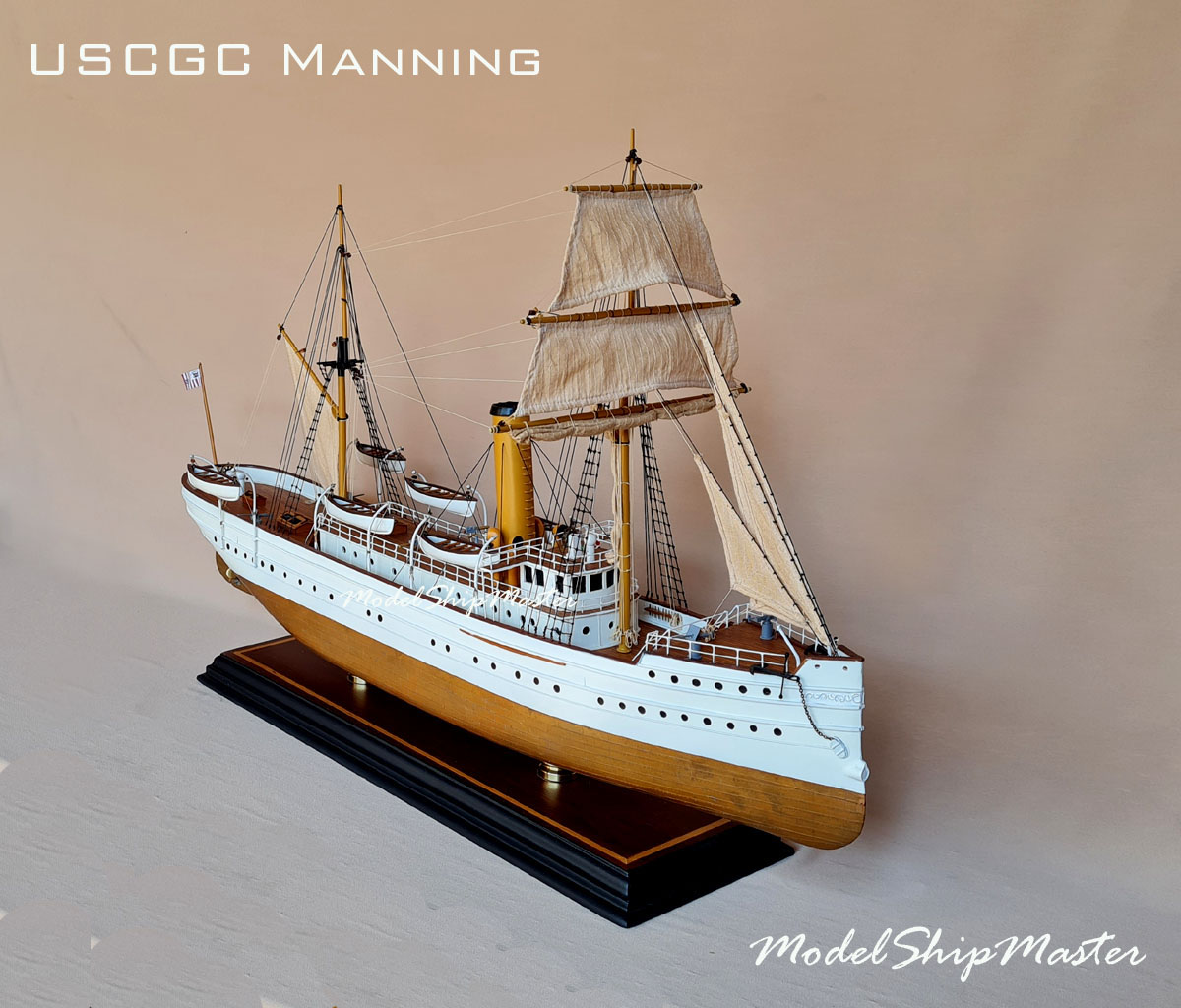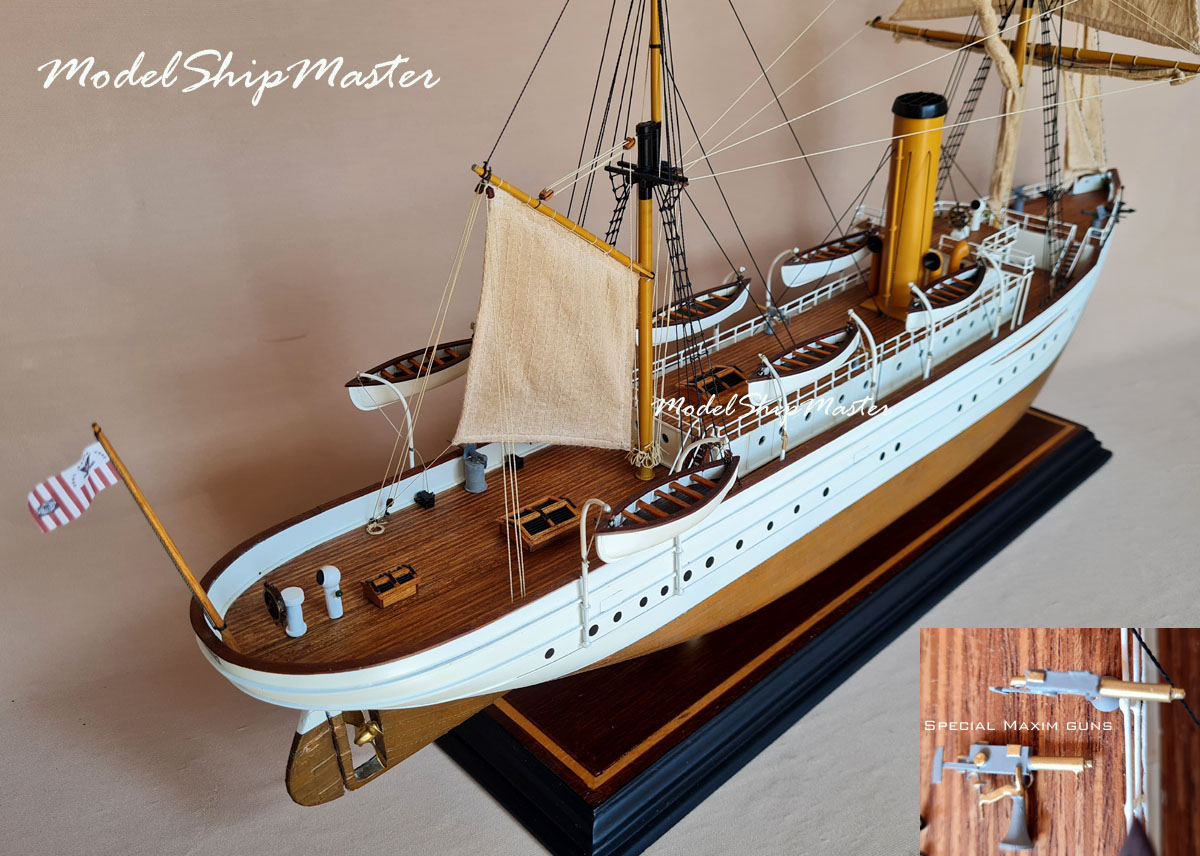|


256-bit encryption
$500,000 protection

|
Revenue Cutter USCGC Manning
The Manning was a revenue cutter of
the United States Revenue Cutter Service that served
from 1898 to 1930, and saw service in the U.S. Navy in
the Spanish–American War and World War I.

Manning
was commissioned on 8 January 1898 into the U.S. Revenue
Cutter Service in 1897. Designed as a cruising
cutter, her lines were those of ancestral clipper
cutters, but with a plumb bow. She had a top speed of 17
knots. Below the waterline Manning was sheathed in
copper and had eleven watertight bulkheads. The
composite design was better to weather the ice
conditions of the Bering Sea.

As
tensions mounted before the Spanish–American War, USRC
Manning was equipped to carry a single bow torpedo tube.
Manning and the cutters built during the same time, USRC
Gresham, USRC McCulloch, USRC Algonquin, and USRC
Onondaga were the last cruising cutters rigged for sail
and carried the first electric generators installed on
cutters. So successful was the design that these cutters
furnished the general pattern for cutter construction
for the ensuing 20 years.
USRC Manning served during the Spanish–American War
during the period 24 March 1898 to 17 August 1898, while
based out of Norfolk, Virginia. This period included a
four-month war deployment, from May 1898 through August
1898, on blockade and escort duty off Cuba. On 12 May
1898, she joined the armed yacht USS Wasp and the
unarmored cruiser USS Dolphin first in landing, then in
providing naval gunfire support for the evacuation of a
force of U.S. Army soldiers at Cabañas, Cuba.
During the years of 1900 through 1916,
Manning
patrolled the Bering Sea enforcing
treaties to prevent pelagic sealing and performing
search and rescue duties.
When the Revenue
Cutter Service and the United States Lifesaving
Service combined in 1915 to form the new United States
Coast Guard, Manning became part of the new service and
was thereafter known as USCGC Manning.
On 6 April 1917 Manning once again became part of the
U.S. Navy for service in World War I and served as one
of the components of Squadron 2, Division 6 of the
Atlantic Fleet Patrol Forces. On 30 July
1917, Manning along with the cutters Algonquin, Ossipee, Seneca, Tampa,
and Yamacraw were ordered to be outfitted for "distant
service" in an unspecified region. The six cutters were
outfitted with 3-inch guns and depth charge racks and
were assigned duty as convoy escorts based
at Gibraltar. The six cutters of the squadron
immediately assumed wartime duties escorting convoys
between Gibraltar and the United Kingdom, and
conducting antisubmarine patrols in the Mediterranean
Sea. These duties continued until 28 August 1919 when
the cutters were turned back to the Coast Guard by
executive order.
After World War I, the Coast Guard
Manning returned to the control of the Department of the
Treasury, and in the spring of 1919 the International
Ice Patrol, which had been suspended during World War I,
was resumed. Much of Manning's duty during her final
years was out of Norfolk, where she decommissioned on 22
May 1930. On 6 December 1930 she was sold to Charles L.
Jording of Baltimore, Maryland.

This 25" long x 16" x
8" (1/100 scale) primarily wood model
of the USCGC Manning
was built for a
collector who owned one of Manning's guns.
For more premium Coast Guard models from ModelShipMaster, click here:
https://www.modelshipmaster.com/products/Coastguard/index.htm
Learn more about the
USCGC Manning
here:
https://en.wikipedia.org/wiki/USRC_Manning_(1898)
|